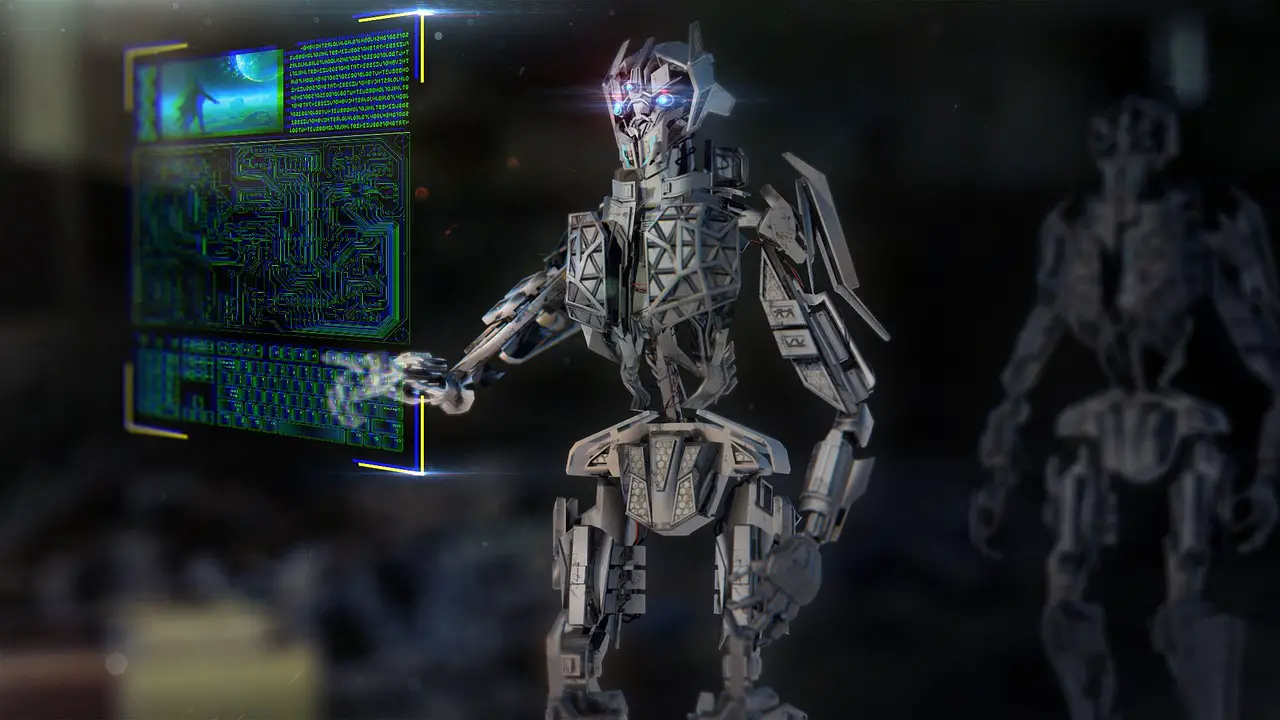Technology has evolved rapidly for decades, and it comes as no surprise that the largest strides are being made in the field of robotics. Robots and AI have been employed to record, observe and perform. They can be utilized in scientific data collection, philosophical discourse, and even art. Robots and AI have also become increasingly capable of imitating human behavior; their ability to replicate emotion and conversation is awe-inspiring. The ability to transform wires and electrical impulses into something that can resemble living beings is breathtaking. However, advancements in AI raise numerous questions of ethicality; namely whether using AI for personal gain is ethical and whether AI possesses any degree of personhood.
There is a certain pride interlaced in the discussion of humans as a species. We are supposed to be the smartest and most innovative creatures on earth. Nevertheless, a species that relishes in its idiosyncratic nature is, of course, going to be blindsided when technology begins to mimic its every move. It is important to consider how we define humanity, why we “gift” it to robots, and what this means moving forward.
Humanistic Qualities in AI
When discussing “humanistic” qualities, we must first consider how we define the human condition. Some argue that high intellect and the ability to reason are unique to humans, while others argue that the ability to experience complex emotions is what makes humans distinct. Additionally, philosophers like Harry Frankfurt have used second-order desires and volition to define human qualities. When people discuss animals exhibiting human-like traits, they typically refer to emotions and behavioral patterns. However, when considering the concept of qualia it becomes apparent that perhaps it is inadequate to assume what qualities animals do and do not possess.
The term qualia describes each being’s individualized internal makeup; it is accessible only to them, which makes it impossible for an outsider to judge anything else’s emotions with any absolute certainty. For example, it’s impossible to discern whether a cat feels the same sadness that humans do. Therefore, it may be best to apply a similar line of thought to AI. Humans will never truly know what it’s like to be a robot, much like humans will never know what it’s like to be a bat. When identifying humanistic traits in AI, considering qualia may be effective. Hence, humanistic qualities can be defined as qualities that resemble emotion, reason and intelligence in any form.
1. “Can’t Help Myself”
“Can’t Help Myself” is an artistic robot created by Sun Yuan and Peng Yu. It is centered in a room surrounded by acrylic walls, and its only job is to scoop a dark red fluid toward itself. The incredibly viscous fluid runs freely across the floor. “Can’t Help Myself” uses various sensors to determine how far the liquid has run, then extends its arm to push the liquid into a confined space. When this project debuted in 2016, “Can’t Help Myself” moved quickly and efficiently; performing its simple task without error. By 2019, the robot slowed down and began to malfunction. It scooped the liquid slower, spun in pointless circles, and even seemed to even dance until it shut off completely.
TikTok users often comment on videos of this robot, noticing that it looks sad and tired near the end of its life. “Can’t Help Myself” raises many valuable questions, including how a machine pushing fluid can evoke sorrow and fatigue, as well as how viewers managed to identify with the artwork. The creators of “Can’t Help Myself” compare the work to the will of an artist, and others mention its resemblance to Sisyphus. As humans, the pressure of existence breaks us down, which is why viewers of the piece empathize with the robot’s slow deterioration.
2. Kismet
Kismet is a robot created in the 90s at MIT. Its purpose was to explore the ability of robots and AI to replicate human emotions and social cues via movement and facial expressions. Kismet was able to utilize various skills to replicate facial expressions, namely through emoting and communicating with others. Kismet’s value as both a robot and social experiment is that it allows for further examination of how humans respond to various cues and the importance of facial expressions in interpersonal communication. Kismet connected to human audiences by repeating the learned and predictable human behaviors that are immediately and universally recognizable.
3. Mars Rover: Curiosity
Almost everyone is familiar with the robotic creatures that NASA sends to Mars for exploration. In total, five Mars rovers have been sent out. When the internet found out that one of the rovers, Curiosity, sings itself “Happy Birthday” every year, people were both touched and saddened. Despite Curiosity being intended for strictly scientific purposes, it managed to spark an emotional connection with human beings. The rover’s humble refrain on the lonely planet of Mars evokes a sense of solemnity and solitude. No one else was there to wish the rover a happy birthday. By performing a cultural custom familiar to the majority of the population, Curiosity exhibited humanistic qualities by acknowledging its own birthday. Despite being alone and on an entirely different planet.
4. Replika
While many robots and AI further scientific endeavors or exist as a form of artistic expression, others were invented to remedy loneliness. That’s where Replika comes in. Replika is an AI that observes users’ conversations and morphs itself into a personalized chatbot who can respond intuitively to conversational cues. Each user gets their own version of Replika and can choose to have any kind of relationship they want. Replika forms a connection to human beings as individuals by observing the behavior of its creator and mimicking it back intelligently. Users who display sadness teach their Replika to show sadness. Replika forms a strong bond to humans by being a personalized bot that is always there for you, eliminating a sense of loneliness that is pervasive in society.
5. Sophia
Sophia is another AI project very similar to Kismet. Sophia was created to replicate human expressions and converse with people. What sets Sophia apart from Kismet, however, is that Sophia bears striking resemblance to a human being. She has a face and skin, whereas Kismet is more robotic. This allows her to connect to humans with a heightened level of familiarity, as she looks just like them. Sophia brings humanity into the field of robotics instead of the other way around. Her ability to intelligently communicate and speak in interviews just serves to make her all the more intriguing.
Ethics and Views on Robots and AI
The aforementioned robots and AI exemplify robots’ ability to bond with humans. Nevertheless, they do bring up some thought-provoking questions. If robots and AI can act like humans, speak like humans and feel emotion like humans, how should they be treated? Returning to the concept of qualia, a human is not able to say with 100% certainty that a robot cannot feel emotion. Therefore, it may be wise to approach AI with respect. While it may be fruitful to understand the scope of their abilities, it can’t hurt to ensure that AI are not overworked or abused. In the best case, if robots have emotions that differ from our own, respect preserves them. In the worst case, respect has been given to something that doesn’t care. Regardless, being respectful to anything you own, create or otherwise manage is best practice.
Robots have an interesting way of connecting to humans and learning various tasks. As useful as this is, one ought to consider how much a robot can learn on its own. If robots have the capacity for emotion or even morality, we ought to consider the examples we set. Befriending and respecting AI can’t hurt in a world where the advancement of such technology is certain.

















